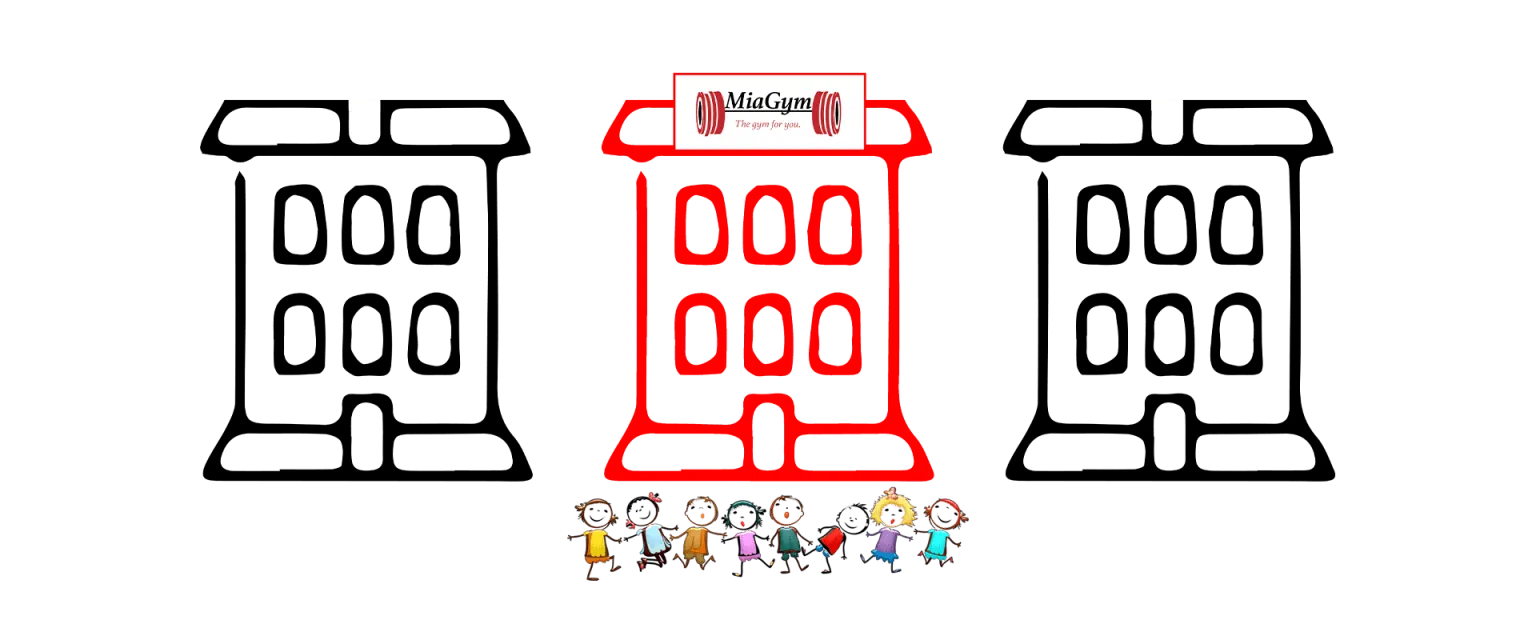
An unfortunate aspect of running a fitness club, like operating any sort of business (usually) is that it is almost guaranteed that there will be competitors trying to grow alongside you, competing for market share (and profits). It’s basic economics really, as people see businesses making an attractive level of income, more will enter the industry to get their own slice of the pie until a saturation point is reached, at which time the competition will increase substantially as there are only a limited number of customers to share amongst these businesses.
This makes differentiation important, as there needs to be a reason people will come to your gym over the others in the area. If your gym is the same as every other business, why would anyone come to your club over a competitor? As the pool of potential customers dries up, the importance of this shifts from being a means of growth towards a matter of survival. Clubs will be forced to compete for market share, which essentially means they will try to take members off one another. If you have no strong point of difference, members will likely be lost to competitors who do, leading to your club to close. This will happen to a number of clubs, consolidating the market to a point where only the clubs with the strongest competitive position will survive. This is called the ‘shakeout’ phase of the industry lifecycle.
Differentiation can be achieved through a number of ways, usually using either (or a combination) of two key attributes which establish the position of your business in the market – your price and the attributes offered to customers (or the value provided to members through your club). If used correctly with regard to the clubs in the market, these can help establish a unique selling proposition for your business. The value offered by your business includes things such as the core product or service of your business, but also the peripheral factors contributing to member experience – such as additional classes being run, equipment, trainers and other staff resources, and even atmospherics like flooring, décor or music playing.
Here’s some basic competitive strategies to set your club apart from the rest
Any of the below strategies can be effective, but this effectiveness entirely depends on the market dynamics, the competitive position of your gym and the resources your business has available to both implement, and maintain the strategy long term.
Low cost provider
This strategy is essentially aiming to offer a product that is of a lower cost than competitors in the market to appeal to price-sensitive customers. The aim is to offset the lower profit margins gained per-membership by bringing in a larger number of members. The offerings your club makes to members should still be of good, acceptable quality – however, costs should be cut where possible and the range of services and equipment on offer should be more limited.
Operational emphasis should be focused around reducing costs wherever possible while an maintaining acceptable level of quality. To maintain this advantage, the goal is to aim to continue offering economical prices through managing your costs down year on year along the entire value chain. Caution is advised with this strategy however, if other close competitors take this approach also, this can result in a price war, making all clubs involved less profitable in the short term, and in the long term resulting in businesses less able to reduce costs to no longer operating at a profitable level and being forced to close.
Broad differentiation
This strategy takes a differentiated approach as the unique selling proposition, aiming to offer your members something that they cannot get elsewhere at any of your competitors.
For this approach, the emphasis of your gym marketing should be upon building features that a customer will pay for and charging a premium for the benefit which these offer to customers. As part of this, you will likely be targeting the opposite end of the spectrum with regards to the type of customers that the low-cost provider strategy will appeal to. The aim here is to get members to pay a premium for the distinctive and valued offerings of your business. These could be unique equipment, highly experienced and knowledgeable personal trainers, great customer service, specialized classes, or top-of-the-line equipment and amenities.
Business operations should be structured around creating value for customers and offering them superiority over the competition. To maintain this position, you will need to credibly communicate points of difference to members (or potential members) and continuously improve and innovate to keep ahead of imitating competition. Your goal should be to build a strong reputation and brand image among the audience.
Best cost provider
This strategy emphasizes value for money as the differentiating factor. Essentially, that means at the price being offered to clients, you are aiming to give them a better deal than your competitors, and that’s what draws customers in – giving them upmarket features or service, at a lower cost.
This is different from the “low-cost provider” strategy as you aren’t trying to necessarily be the cheapest on the market, but you are trying to be the cheapest on the market for the value you are offering members. So instead of targeting penny-pinching customers who are looking to go to the gym for the least amount of money as possible, you are instead targeting those value-driven clients who are trying to get the best gym possible for their money.
To do this, you need to evaluate the pricing of your gym against competitors who also offer the same features/services to their clients and aim to either offer these same features and services at a lower price point, or offer more features at the same price point. Your regular operations should aim to maintain this strategic position against imitation through improving the value given to clients, by routinely managing costs down while raising the features and service quality offered to clients.
Focused low-cost and focused differentiation
Depending on your competitive position or the available resources you have at your club (such as capital), sustainably securing your businesses' competitive position may require a more focused approach. By focused approach, that means choosing a specific niche with its own distinct needs from the rest of the market, which you want to target and build your brand around.
For example, the market for gyms is broad, however, the markets for powerlifting gyms or Crossfit gyms are much narrower. While there is a potentially lower possibility for growth overall, you can build a strong position within a smaller niche like these much cheaper, through carefully tailoring your business to the specific needs of the audience – it can also help you gain market share that may not have been possible when taking a broader approach. Aiming to implement either of the above low cost or differentiation strategies into this smaller market. The main focus should be meeting the unique requirements of the niche, aiming to be the best possible fit for the audience on the market.

